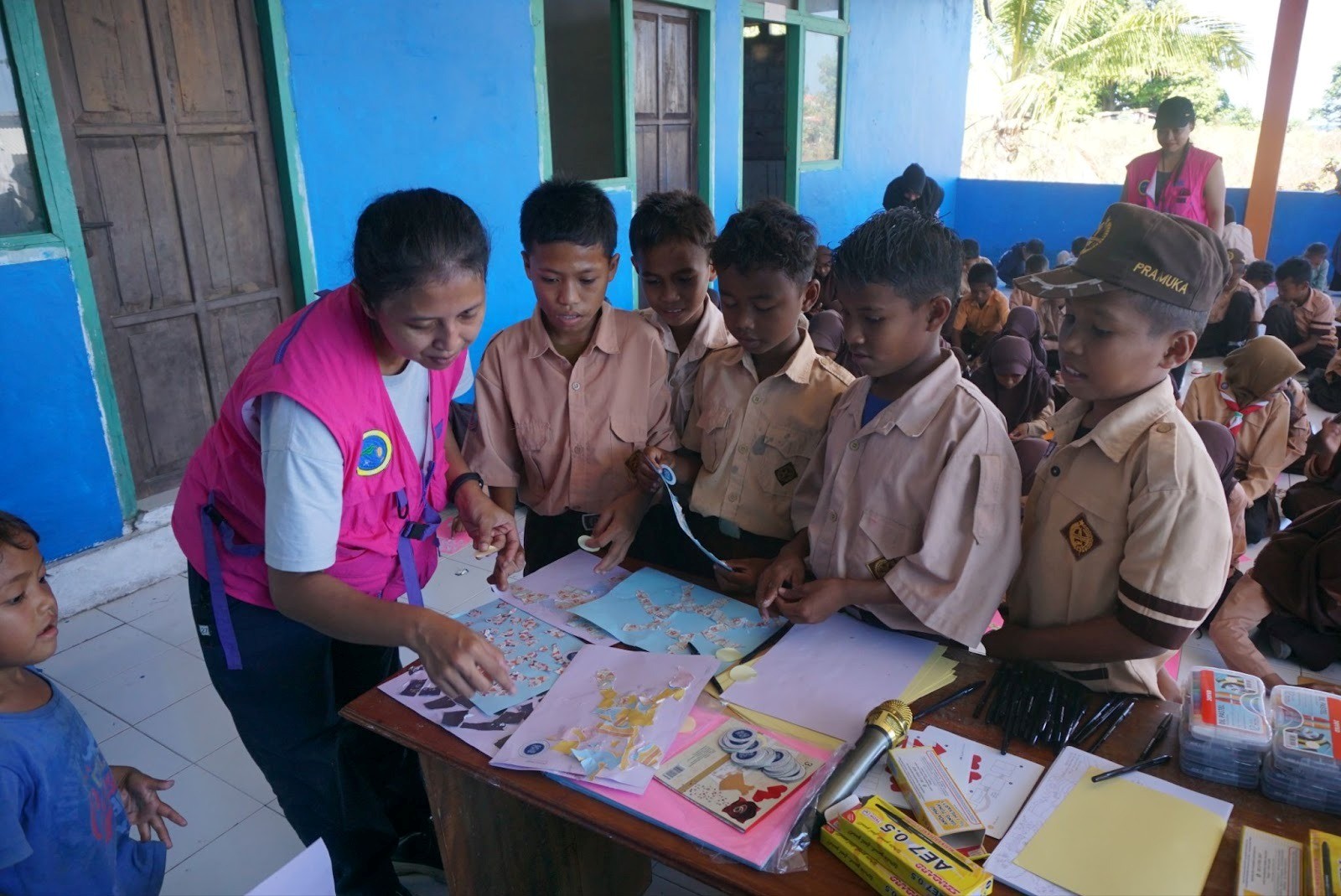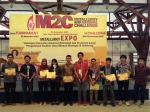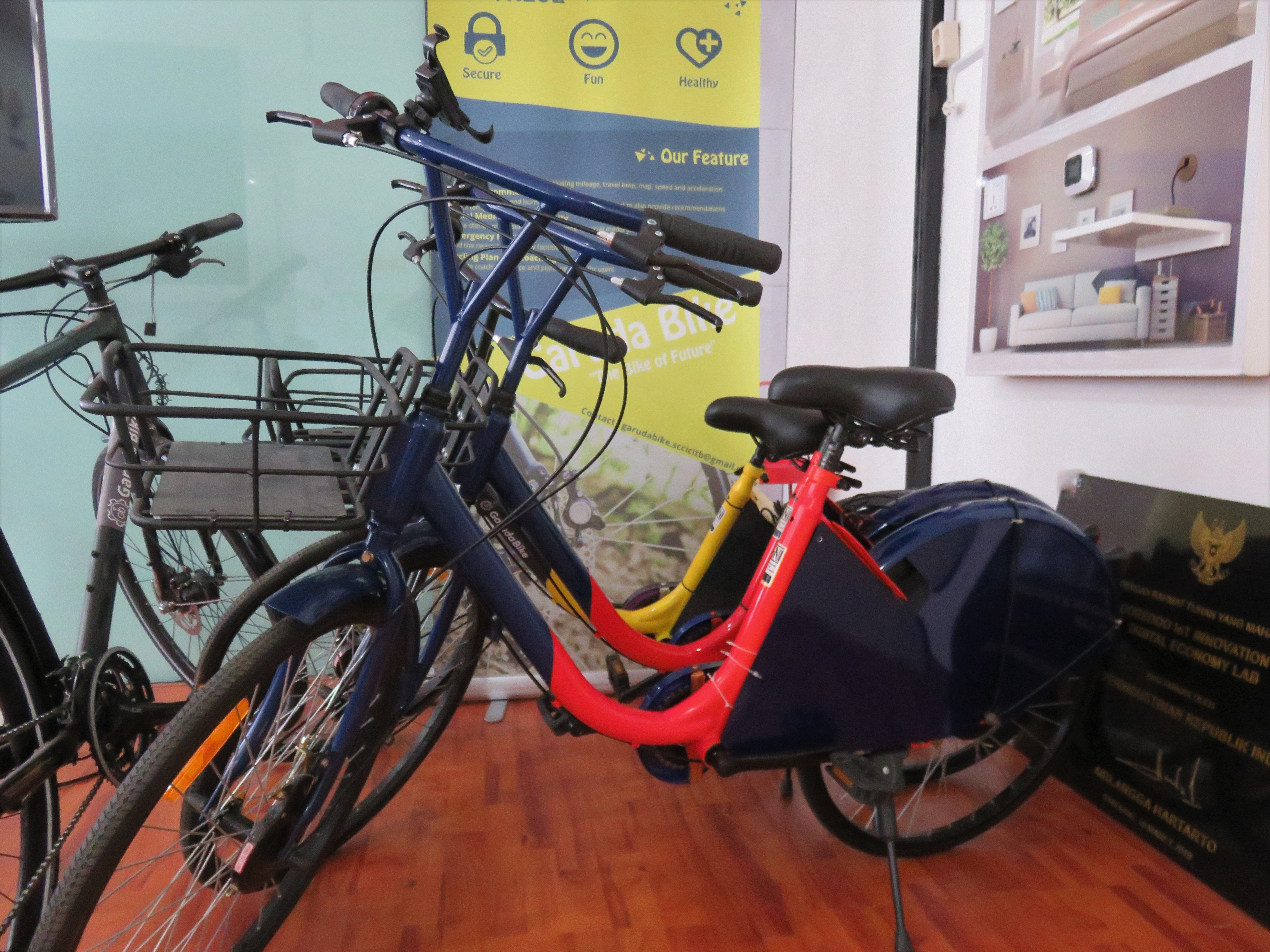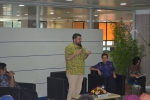Development of Robotics Technology in ITB
By Adi Permana
Editor Adi Permana

*Prof. Dr. Ir. Bambang Riyanto Trilaksono (Photo by: PR of ITB)
BANDUNG, itb.ac.id – Institut Teknologi Bandung have produced excellent researches in various fields, including robotics. Many developments related to robotics technology are conducted in research centers and related research groups in ITB.
Regarding robotics technology, Bambang explained that basically, robots are electro-mechanic system that move automatically without human control and order. Scientifically, robots combine mechanics, electronics, controls, softwares, AI, etc. “So, it is a machine that moves and acts intelligently. It does not need human intervention. That’s the simple definition of robots,” he said.
According to this Vice Rector of Research, Innovation, and Partnership of ITB, robots are generally divided into two based on the functions. First, robots used in industry; second, robots used in household or community.
Robots used in industry or industrial robots are usually made for the purpose of automation of production process in factory. The shape usually resembles an arm that can do several things such as installing screws, welding, and other automation functions that run in factory. He said that industrial robots are commonly used to lift / move goods from one place to another by determining the starting and destination point. “We often see industrial robots used in automotive companies,” he said
All the while, robots for non-industrial purposes also have distinct functions. For example, museums abroad have used robots as visitor guide; for household purposes, simple robots are created to clean up the floor and is capable of avoiding objects in front of it. There are also robots used in restaurants to deliver food and beverages as well as robots used to cut grass.
“In the category of non-industrial robots, there are entertainment robots. For example, entertainment robot or game robot such as Aibo from Sony. There are also robots that monitor and secure the surrounding environment,” Bambang added.
Types of Robots
Robots are also divided based on its area of works. According to Bambang, there are three types of robots in this division, namely aerial, land, and water robots. Aerial robots are commonly known as Unmanned Aerial Vehicle (UAV) or as drone. UAVs have several types such as the ones using propellers, resembling helicopters, and having fixed wings like an airplane.
Robots that operate in water are commonly referred as underwater robots. This type of robots is used to explore natural resources located underwater by using its camera; it is equipped with specific sensors that vary depending on the purpose. As for land robots, the type usually come as mobile robots or humanoid robots. Humanoid robot is a type of robots that is designed to resemble human, complete with legs, arms, body, and head.
Development of Robots in ITB
ITB develop aerial, water, and land robots. Bambang said that in drone technology, ITB currently develops a drone that can monitor agricultural lands and do people counting. “For example, the number of people in a crowd can be counted by using a drone equipped with cameras” he added. Currently, ITB also develop a drone that can fly on higher latitude. The technology is developed by Center for Unmanned System Studies of ITB.
As for underwater robots, development is done to remotely operated vehicle technology or ROV. These robots are operated by human and the control is done through wire. Its exploration function is supported with cameras, sonars, and sensors. Development is conducted in cooperation with Indonesia Navy.
“In the context of underwater robot, we also develop underwater glider. The glider is an underwater robot whose ups and downs movements are provoked by buoyancy force; it saves up battery use and can explore a wide area of sea. It is in cooperation with BMKG for the development,” he said.
The underwater glider is equipped with temperature, depth, position coordinate, and seawater salinity sensors. Information gathered by the robot are transmitted to ground station when the robot emerges to water surface. “Regarding underwater robot, we also develop autonomous underwater robot that can maneuver under the seas,” he said.
The third type is land robots. ITB students have conducted many researches on this technology which they bring to national and international competitions. Bambang said that ITB also develop a robot that can map the environment in 2 dimension or 3 dimension display. The robot is equipped with lidar (Light Detection and Ranging) sensor that scans its surrounding environment. “We did some mappings to STEI building. It resulted in 3 dimension maps of buildings around the robot,” he said.
Other development that is carried out is human following robot. This mobile robot is integrated with IoT technology installed to human body so that wirelessly, the robot will follow wherever human moves. In addition, ITB also conduct development on humanoid robots, a robot whose shape resembles human. One of the researches conducted is about how to create formation out of humanoid robots which communicate to each other and avoid obstacles.
“Currently, we develop collaboration between land and aerial robots. There will be a drone above a land robot. The drone will take off, follow the movements of land robot, and land right on the land robot. This collaboration is to monitor areas contaminated with hazardous substances,” he said.
Some robots are developed at STEI, FTMD, and FTI of ITB. ITB have conducted research on spy insect robots in cooperation with State Intelligence Agency (BIN)
Obstacles in Making a Robot
Each robot needs power or energy to move; the energy comes from battery. Several battery components are developed in ITB while the rest are taken from the market. “Several sensors installed on the robot are developed by ITB and several others are available on market,” Bambang added.
According to Bambang, obstacles in the production process are the components, algorithm, and the integration. The funding comes from Kemenristekdikti, cooperation with abroad, and ITB.
Research on robots are multidisciplinary. Bambang hopes that researches on robots in ITB can generate good multidisciplinary cooperation, both in the development or the utilization.
“Our biggest challenge is to create a robot whose movements and intelligences resemble living organism. We can duplicate the shape, but robots’ capability to comprehend surrounding information and to make decisions are still behind that of human. Its capability to understand people’s words are also limited,” he said

.jpg)


.jpg)
.jpg)



